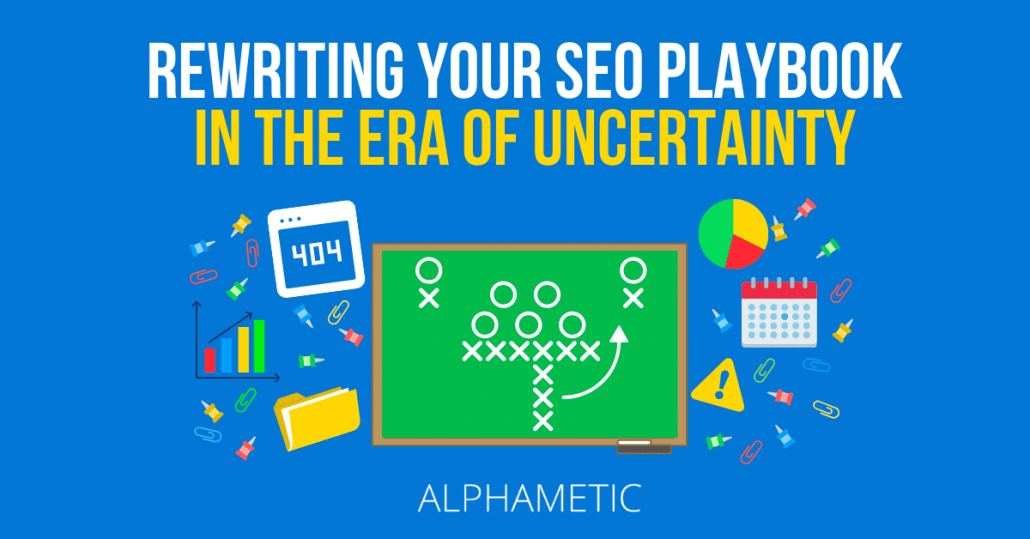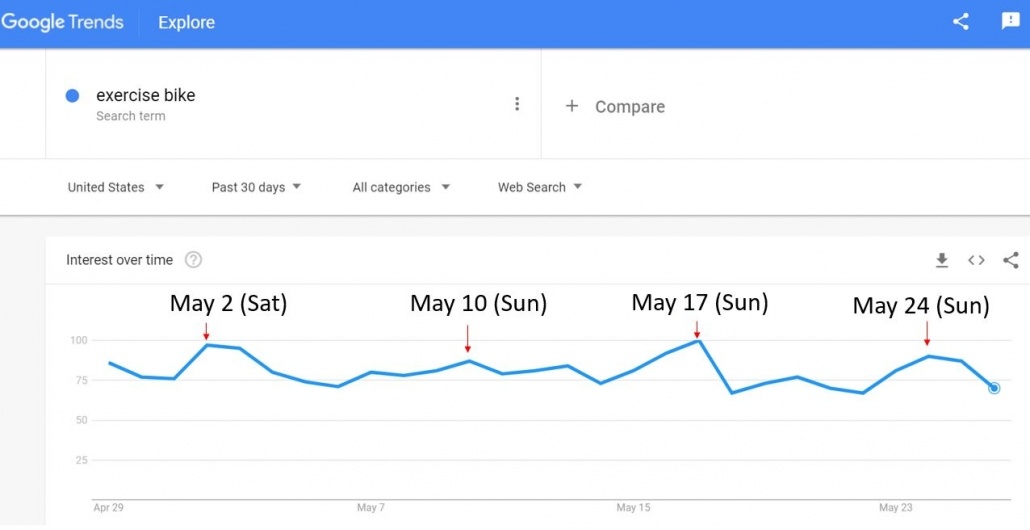Rewriting your SEO Playbook in the Era of Uncertainty

COVID-19 has forced us to rearrange many of our routines and habits. We go to the store less, stay home more, and do our best to make the most of the “new normal” environment.
Consumption and search are a part of our daily lives, and have inevitably been affected by Coronavirus. As we navigate these unprecedented times, how can you adapt your digital strategy to keep up with consumer shifts and spot emerging opportunities?
In a recent webinar hosted by Brightedge, thought leaders from leading consumer brands weighed in on search and consumer trends, and how businesses can pivot their SEO strategy to soften the impact of COVID-19. These were the main takeaways from their research and expert advice.
Prepare for a Flattening of the Weekday Curve
If you do marketing for an ecommerce business, you may be familiar with the “weekday curve”: while customers are busy going out and catching up on errands over the weekend, sales drop. Spending then picks back up on weekdays, hence the “weekday curve.”
Among other changes around what people are buying, when people are shopping has been affected by COVID-19 as well. Whereas weekends used to be for going out and spending in stores, they are now largely spent inside. The result is a peak in ecommerce search terms on weekends, reversing the prior trend of weekday peaks.
Looking at the Google Trends chart for “exercise bike,” the peaks during the month of May all happened on weekends.

What’s the takeaway from this new spending trend? If you weren’t running Google Ads and Amazon ads on weekends, now would be the time to start. Analyze search trends for your keywords and increase ad spend during times of the week where customers are searching most, to increase your likelihood of getting seen.
Pay Attention to Shifts in Consumer Spending
Ken Shults, VP of Strategic Innovation at BrightEdge took a look at search trends in a range of industries to gauge how consumer interests have shifted since the onset of Coronavirus, and how industries can prepare accordingly.
Shults broke the industries into four categories: Rebounding, Accelerating, Recovering, and Stabilizing.
Rebounding industries took an initial hit at the onset of COVID-19, but by week 7 began rebounding once consumers began to adjust to lifestyle changes. Industries in this category include apparel, beauty, and IT Networking. Shults recommended that businesses in these industries “focus on winning categories.’ For instance, clothing brands may tone down marketing for professional wear and instead focus on casual clothing lines.
Accelerating industries were flat from the onset of COVID-19, and have since accelerated. Businesses in this category include digital marketing, pet adoption, and garden and patio. Shults recommends to “pour on the gas,” capturing your market’s attention while these shifts are still fresh.
Recovering industries took the biggest hit in the beginning, and are now slowly leveling off. Industries in this category include concerts, hotels, and wealth management. Shults recommends that these businesses “transform and prepare,” pivoting to digital strategies and preparing for an uptick in demand once lockdown restrictions ease up.
Finally, Stabilizing industries saw an uptick in searches, and have since dropped, but are still much higher than pre-COVID figures. Industries in the stabilizing category include gaming, grocery, and IT security. According to Shults this increased demand is here to stay, and businesses need to adopt digital strategies to keep up with demand.
Coronavirus didn’t impact industries uniformly, so it’s crucial to look at trends in your specific industry to get insight as to how you should be shifting your digital strategy now to prepare for a post-COVID-19 landscape.
Let the New Buyer Journey Inform Your SEO Strategy
Your customers are not finding and buying products the same way they did before COVID-19. People aren’t leaving their homes, meaning the buyer journey has moved almost completely online. As the brand, you have to make sure you’re letting customers know what their purchasing options are, and guiding them along the path to purchase.
Carlos Spallarossa, Director of Paid Search and SEO at L’Oreal, and Justin Abrams, Senior Solutions Consultant at BrightEdge, outlined the new COVID-19 customer journey and how brands can adapt.
Consideration: The consideration phase of the consumer journey has become tainted with uncertainty. Consumers are hesitant to leave their homes, and are unsure whether they’ll be able to properly research and purchase their desired products safely. This is the brand’s opportunity to add content to their site that reassures customers and makes them aware of their buying options.
Exploration: Whereas your customers were used to being able to try on products in-store, their browsing must now be limited to shopping online. Carlos Spallarossa recommends mirroring the “hyperpersonal in-store experience,” offering to send product samples for customers to try at home. Customers may be searching with keywords like “contact-free” and “virtual,” so make sure your website is optimized for those searches.
Comparison: Once they’ve narrowed down what products they want, your customers likely still need to weigh their options. To compensate for not being able to browse products physically, customers are spending much more time researching products. This is the opportunity for brands to introduce virtual try-on tools so customers can make an informed decision on their purchase. Make sure your site is updated with relevant keywords like “virtual try-on” and “virtual test drive.”
Test: They’re almost ready to make the purchase, so now it’s time to seal the deal with an off-line test. Spallarossa gives the example of trying on the items that were sent in the sample kit, and Justin Abrams gave the example of going to the mall for a contact-free test drive.
Purchase: If brands accommodate customers throughout the buyer journey, the purchase stage is an ecstatic experience for customers. Their initial purchasing fears were quelled by a seamless buying process, and they found the perfect product without hardly leaving the house.
Learn to Spot Immediate Content Opportunities
As the buyer journey has experienced a dramatic digital shift, customers are spending more time researching and testing before making a purchase. Customers are asking questions about your product, solutions, and brand, and this is your opportunity to guide them towards the purchase.
When performing keyword research, look for high-value, long-tail keywords that get to the heart of what your customers are looking for. If your site doesn’t have an FAQ section yet, make sure to add one and include questions that address Coronavirus-related concerns.
During the webinar, Justin Abrams remarked “more isn’t necessarily more,” and recommended optimizing content for quality over quantity. Publish useful how-to guides, tutorials, and informational content to capture your audience’s attention. Even if they’re not ready to buy right now, by providing valuable content you will be helping them prepare for making the purchase after COVID-19 passes.
Prepare your Search Strategy for the Post-COVID World
Taking a quote from Search Engine Journal, “if you want consumers to choose you, they first must trust you.” By adding high-quality, helpful content to your website now, you will be gaining the trust of your customers for increased demand in a post-Coronavirus world.
While the long-lasting effects of COVID-19 remain unknown, we can use the SEO insights and strategies in our arsenal right now to pivot and prepare for further changes in customer journeys and content opportunities.
Matthew Capala is a seasoned digital marketing executive, founder/CEO of Alphametic, a Miami-based digital marketing agency, author of “The Psychology of a Website,” dynamic speaker, and entrepreneur.




Leave a Reply
Want to join the discussion?Feel free to contribute!